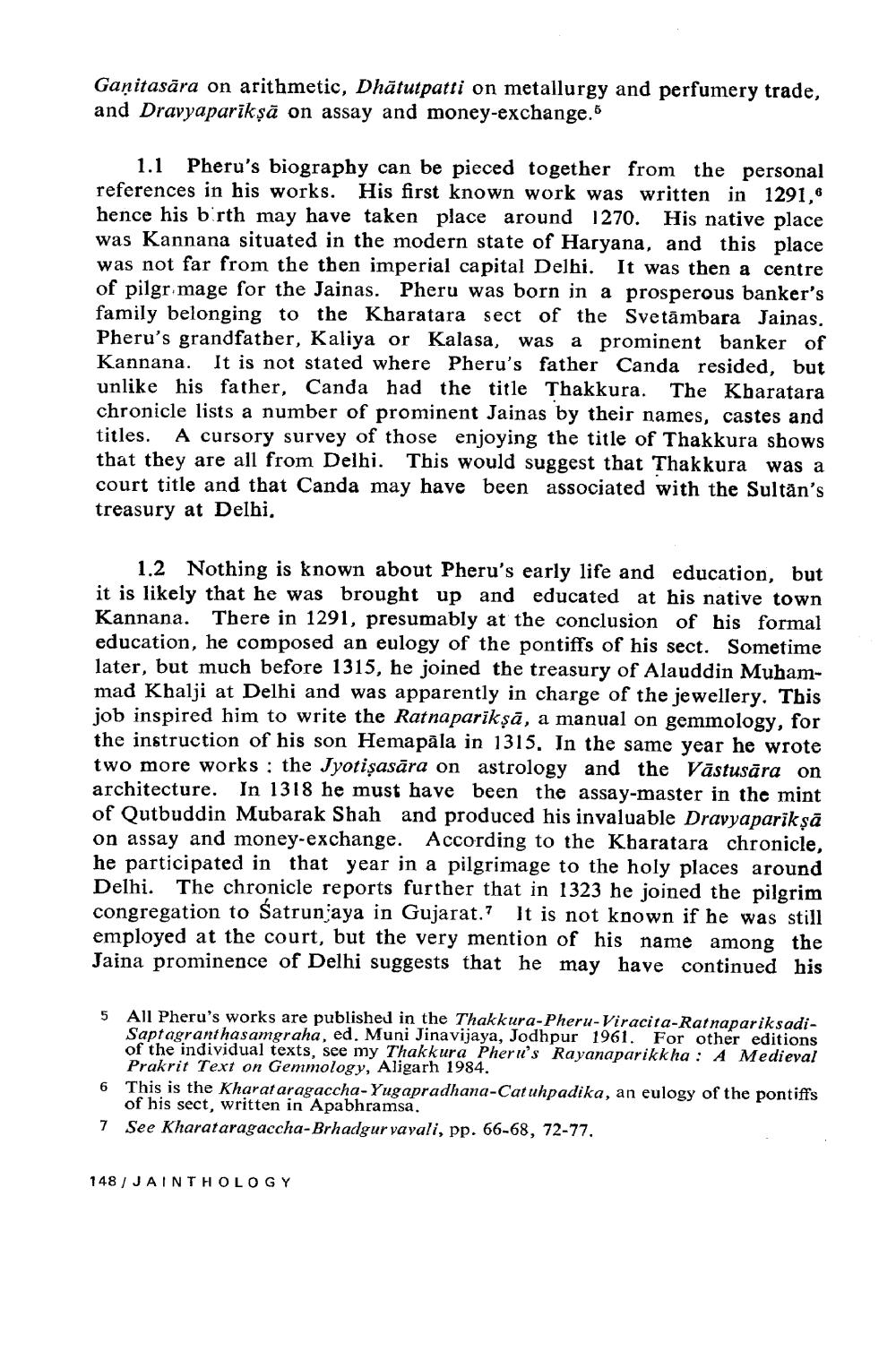________________
Gaạitasāra on arithmetic, Dhātutpatti on metallurgy and perfumery trade, and Dravyaparikşā on assay and money-exchange.
1.1 Pheru's biography can be pieced together from the personal references in his works. His first known work was written in 1291,6 hence his birth may have taken place around 1270. His native place was Kannana situated in the modern state of Haryana, and this place was not far from the then imperial capital Delhi. It was then a centre of pilgr mage for the Jainas. Pheru was born in a prosperous banker's family belonging to the Kharatara sect of the Svetāmbara Jainas. Pheru's grandfather, Kaliya or Kalasa, was a prominent banker of Kannana. It is not stated where Pheru's father Canda resided, but unlike his father, Canda had the title Thakkura. The Kbaratara chronicle lists a number of prominent Jainas by their names, castes and titles. A cursory survey of those enjoying the title of Thakkura shows that they are all from Delhi. This would suggest that Thakkura was a court title and that Canda may have been associated with the Sultan's treasury at Delhi,
1.2 Nothing is known about Pheru's early life and education, but it is likely that he was brought up and educated at his native town Kannana. There in 1291, presumably at the conclusion of his formal education, he composed an eulogy of the pontiffs of his sect. Sometime later, but much before 1315, he joined the treasury of Alauddin Muhammad Khalji at Delhi and was apparently in charge of the jewellery. This job inspired him to write the Ratnaparikṣā, a manual on gemmology, for the instruction of his son Hema pala in 1315. In the same year he wrote two more works; the Jyotişasāra on astrology and the Vāstusāra on architecture. In 1318 he must have been the assay-master in the mint of Qutbuddin Mubarak Shah and produced his invaluable Dravyapariksā on assay and money-exchange. According to the Kharatara chronicle, he participated in that year in a pilgrimage to the holy places around Delhi. The chronicle reports further that in 1323 he joined the pilgrim congregation to Satrunjaya in Gujarat." It is not known if he was still employed at the court, but the very mention of his name among the Jaina prominence of Delhi suggests that he may have continued his
5 All Pheru's works are published in the Thakkura-Pheru-Viracita-Ratnaparik sadi
Saptagrant has amgraha, ed. Muni Jinavijaya, Jodhpur 1961. For other editions of the individual texts, see my Thakkura Pheru's Rayanaparikkha: A Medieval
Prakrit Text on Gemmology, Aligarh 1984. 6 This is the Kharat aragaccha-Yugapradhana-Catuhpadika, an eulogy of the pontiffs
of his sect, written in Apabhramsa. 7 See Kharataragaccha-Brhadgur vavali, pp. 66-68, 72-77,
148/JAINTHOLOGY




